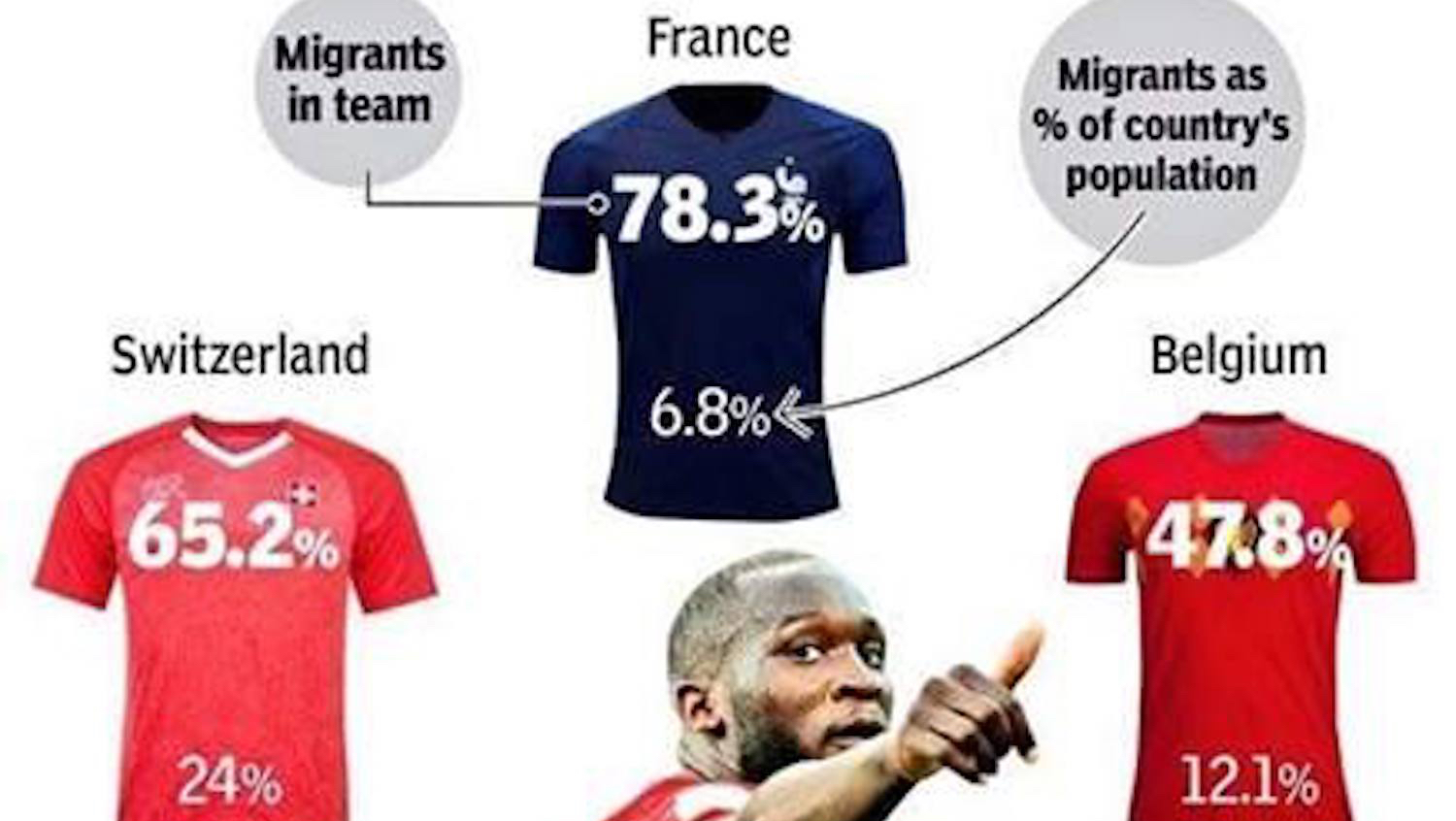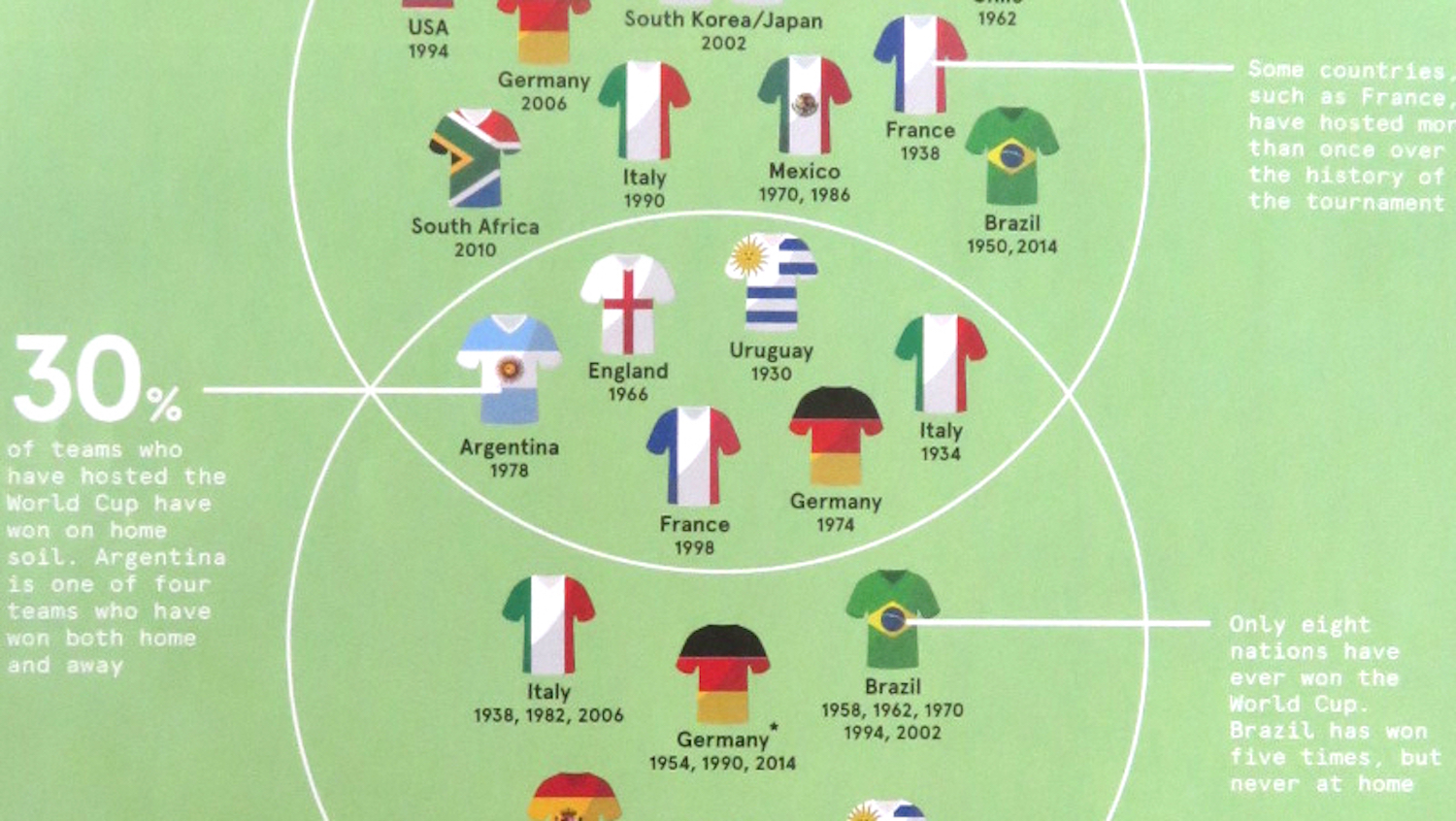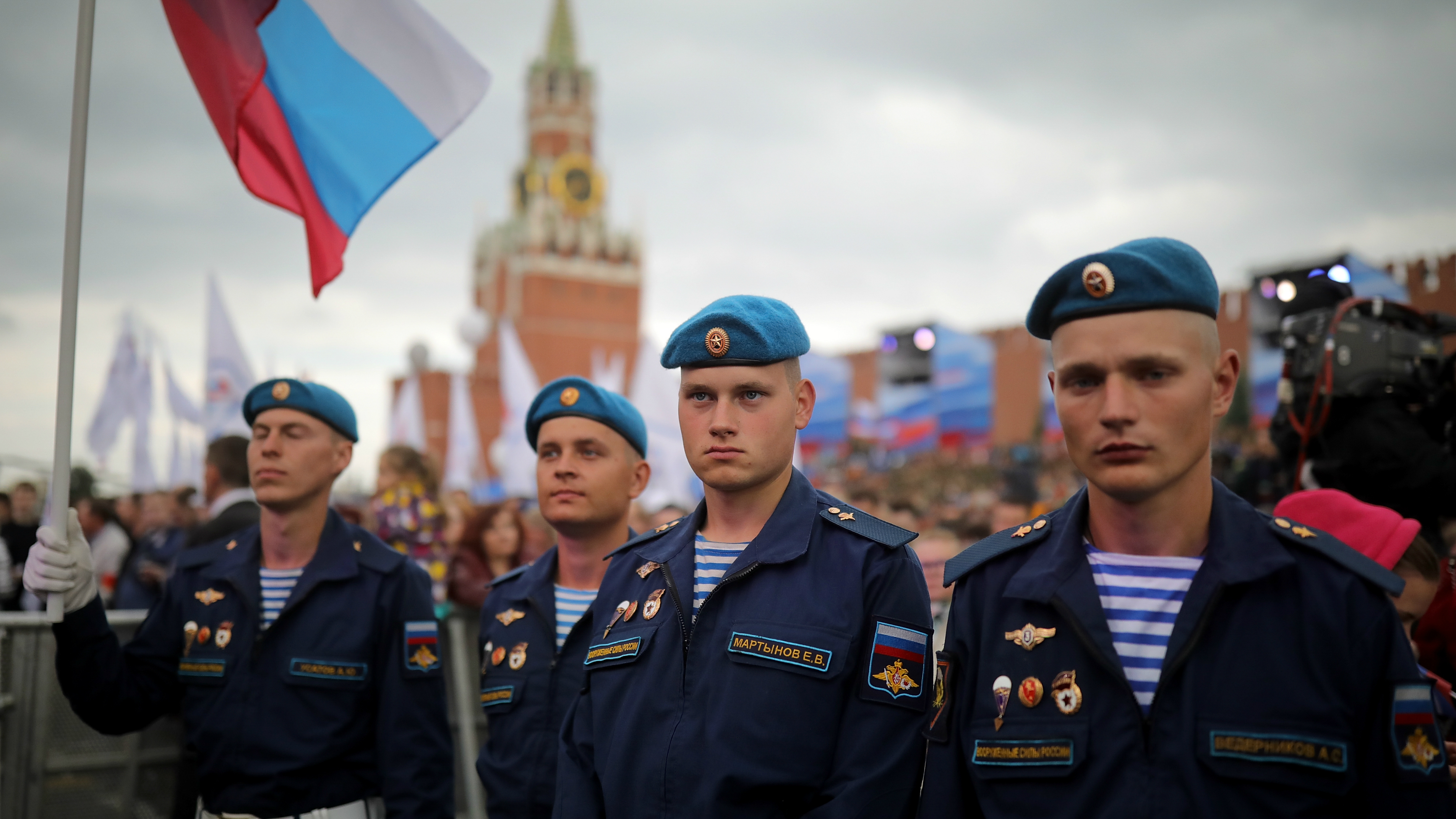World soccer explained in 10 maps

- Love it or hate it, soccer is an inescapable part of our wider culture.
- These ten maps cast a fascinating light on the impact the sport has had worldwide.
- One map answers the most important question: Is it called soccer or football?
The World Cup in Qatar has kicked off. For many, it’s the start of a few weeks of sports heaven. For those who dislike soccer (or FIFA, in particular), the 2022 World Cup does indeed provide plenty of arguments to amplify your abhorrence. There’s more than a mere whiff of corruption surrounding the games.
Love it or hate it, soccer is an inescapable part of our wider culture, and several maps cast a fascinating light on the impact the sport has had worldwide. Here are ten of them.
Ireland has its own “football”
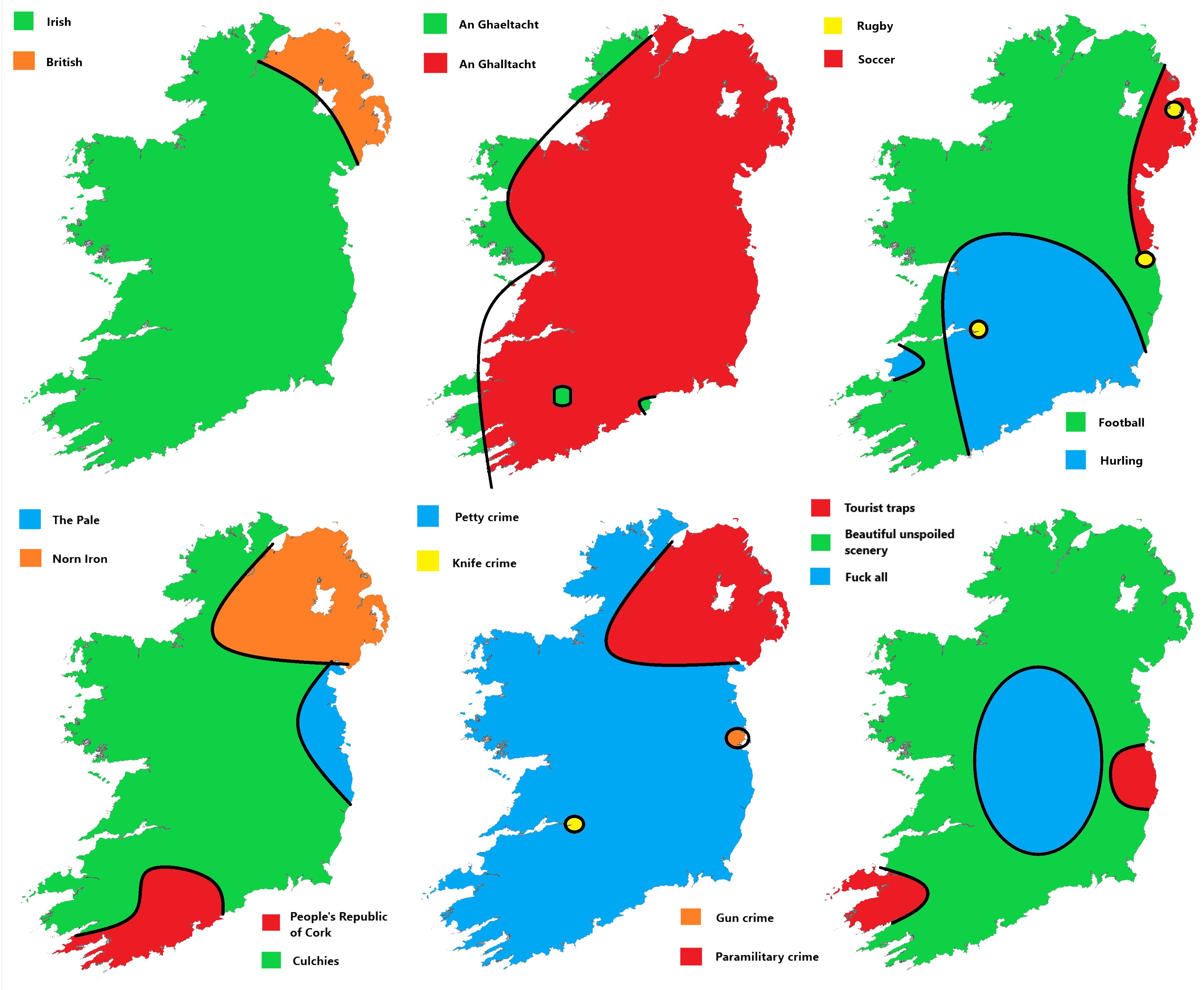
On business in Dublin last week, I spent a non-business hour in The Ferryman, a pub just off Samuel Beckett Bridge. (The Godot Bridge is still in the planning phase.) Right next to the bar, a map of Europe’s major football nations caught my eye. Britain was absent, its empty space partly overlapped by an inflated Ireland. (See this map on the Strange Maps Facebook page). Ireland is not playing in Qatar, while England and Wales are — dating this bit of athletic chauvinism to some previous tournament.
The map above shows six ways to divide Ireland: by politics, linguistics, culture, tourism, and crime. (The yellow circle is Limerick). The top right map serves as a reminder that soccer (in red) is not the only sport played in Ireland. Rugby (yellow) is popular in urban centers, while hurling (in blue) is played mainly in the south and southwest. Covering most of the country (if not most of the people) is the area where football dominates. But this is Gaelic football, played with 15 on each side. Simply put, it’s a cross between soccer and rugby. This game, often simply called “football” in Ireland, is the reason why the game called “football” in England is called “soccer” in Ireland.
Football, soccer, or something else
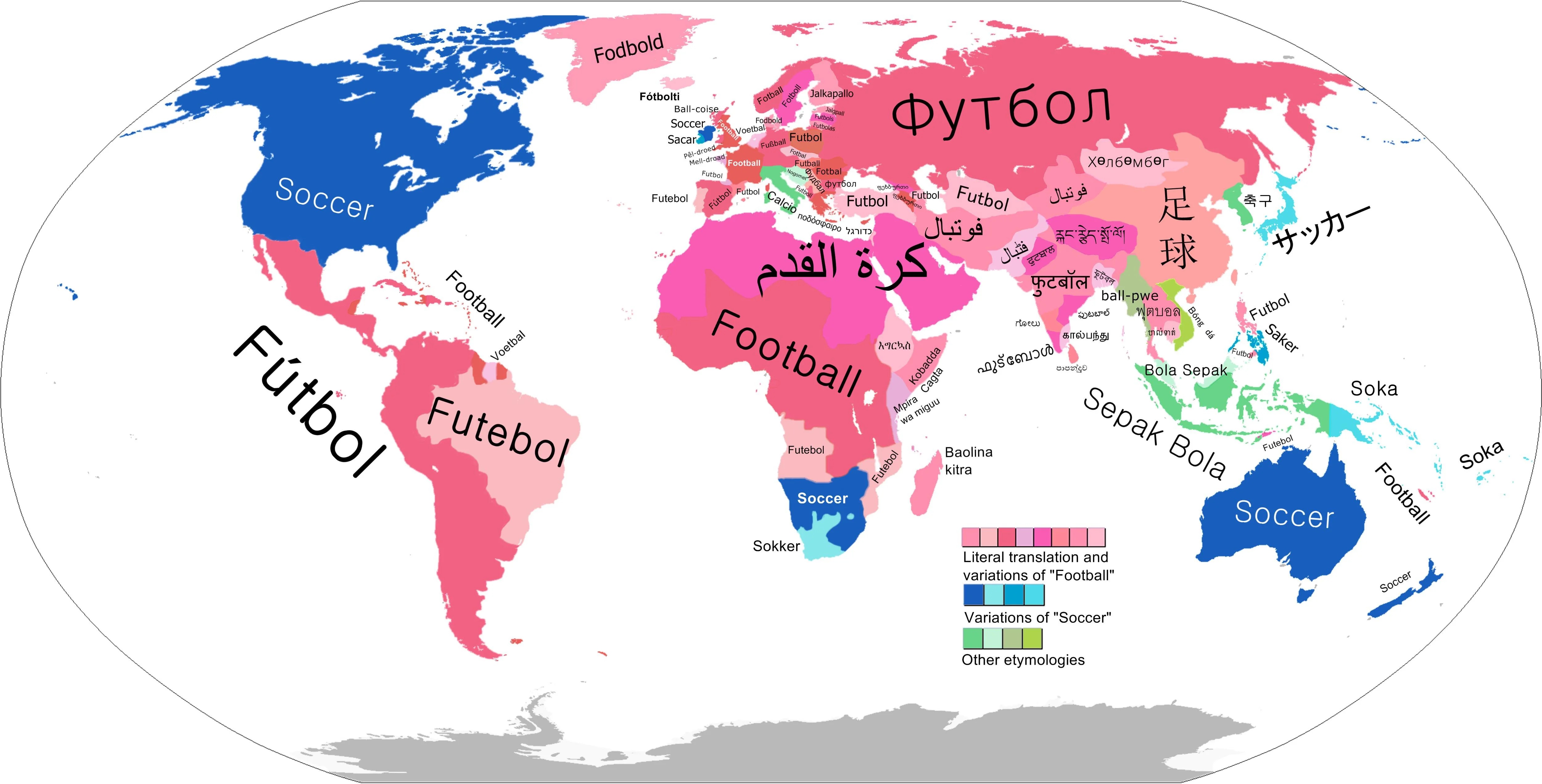
This brings us to the biggest question of all: Do you call it “football” or “soccer”? As the Irish example indicates, if there’s a native sport that also stakes a claim to the former term, the latter one will be preferred, as is the case in the U.S. and Australia. A few other places also prefer “soccer” or its derivations, including southern Africa, the southern half of the Philippines (but not the northern), and Japan. Most of the world, however, goes with “football,” variations of that word (futebol in Portuguese), or literal translations (jalkapallo in Finnish). The Italian word calcio is one of the few exceptions to the football/soccer dichotomy, deriving instead from the verb calciare, which means “to kick.”
The Japanese knotweed of sports
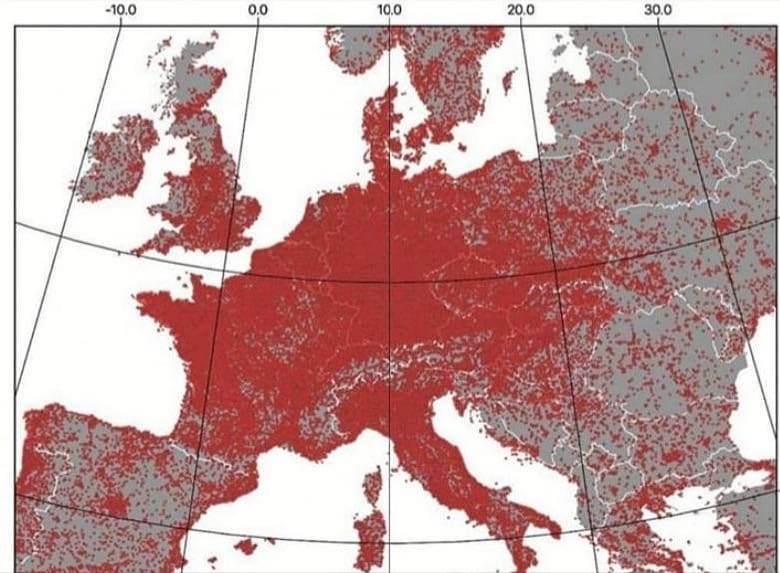
Credit: Terrible Maps
Given that people have been kicking around balls since Antiquity, association football (to give the current game its full name), is surprisingly recent: The rules were codified only in the latter half of the 19th century in England. From then and there, the game spread like wildfire across Europe.
This map shows every soccer pitch on the continent, one dot for each pitch. The map was shown on Terrible Maps, which makes a point of publishing pointless maps. You could say this one merely mirrors Europe’s population density. But that in itself proves something: Soccer is everywhere, or at least any place big enough to field two teams of 11 players. England fans always chant, “It’s coming home,” whenever their team plays an international tournament. While that may be historically correct, this map shows that football, the Japanese knotweed of sports, is now endemic across the entire continent.
The world’s favorite spectator sport
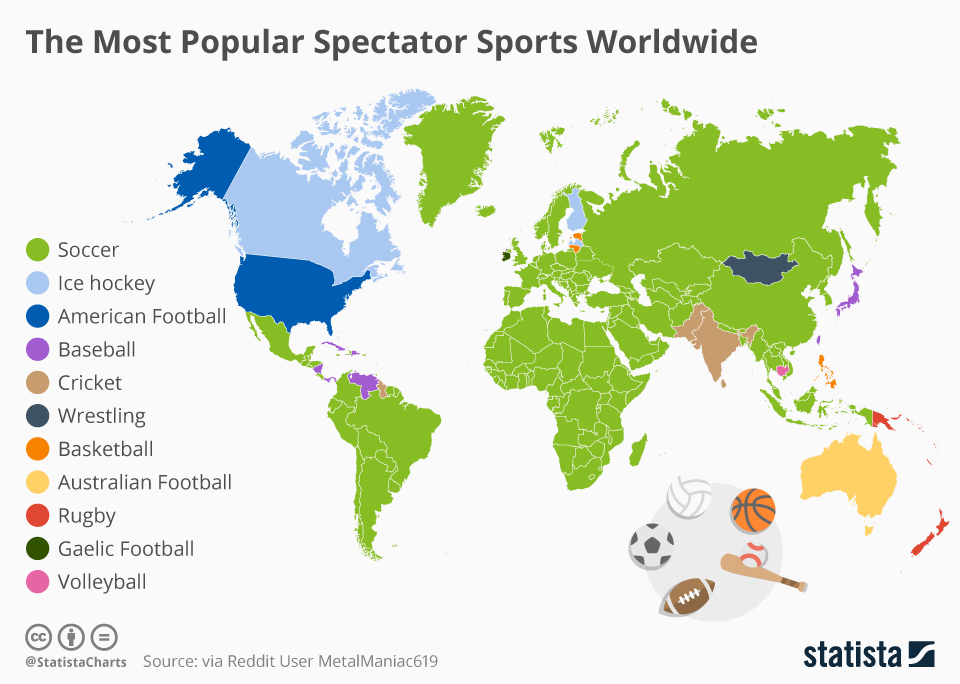
Credit: Statista
Though football is everywhere, it is not necessarily the most popular spectator sport in every country. Not even in Europe.
- As this map shows, Finns and Latvians would rather be watching ice hockey (as would Canadians), while Estonians and Lithuanians prefer basketball (as do Filipinos).
- The number one sport in Ireland is (Gaelic) football, in the U.S. (American) football, and in Australia (Australian) football.
- Baseball rules the roost in a few Latin American countries (Cuba, the Dominican Republic, Nicaragua, Panama, and Venezuela) and two East Asian ones (Japan and Taiwan).
- Pakistanis and Indians agree at least on this: Cricket is the number one sport to watch. (Guyanans agree.)
- New Zealanders and PNG’ers get their kicks, so to speak, from rugby. Mongolians would rather watch wrestling, while Cambodians are most into volleyball.
But in the rest of the world — that’s all of Africa, most of Latin America, most of Europe, and most of Asia — soccer is on top. No wonder FIFA gets money thrown after it.
Fixed and fluid loyalties
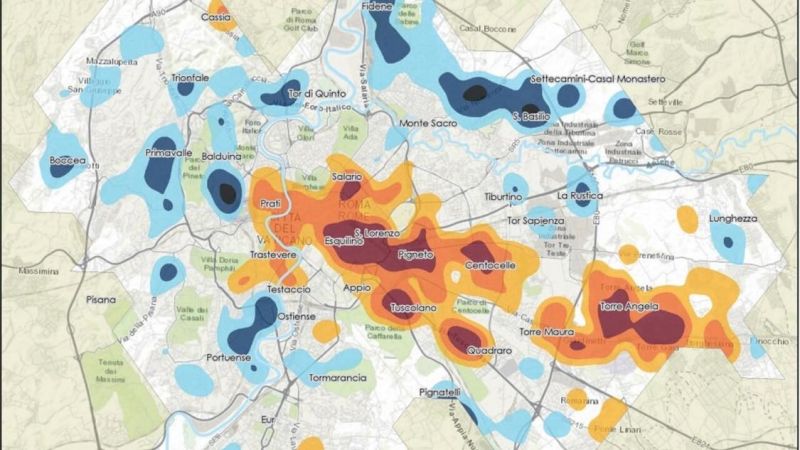
Soccer fan loyalties are both fluid and fixed. In international tournaments like the World Cup, loyalties are based on nationality. Unless you’re a contrarian, you support your own country’s team. If your team has not been selected or has been eliminated, your sympathies are allowed to roam elsewhere, often to neighboring countries — although by the iron law of regional animosity, some people would rather choke than support their neighbor’s team. Then you could pick a team based on players you like or a playing style you approve of.
Once the tournament is over, your loyalty shrinks again to the local level. You support the squad of your preference (often but not necessarily the closest one), and “national” players from other teams are now the enemy once more.
Rivalries can be fierce, especially intra-city ones, like between Manchester United and Manchester City, or Celtic Glasgow and Glasgow Rangers. When in Rome, choose carefully where you wear which team’s colors. This map indicates where the fans of the Eternal City’s two main teams, AS Roma and SS Lazio, live. Romanisti (in orange/red) dominate in the center and southeast of the city, while Laziali (in various shades of blue) are found mostly in the periphery, from where they have the Romanisti more or less surrounded.
(For a previous example of soccer’s tribal loyalties, check out Strange Maps #496 on London’s fanlands.)
Where soccer and geography diverge
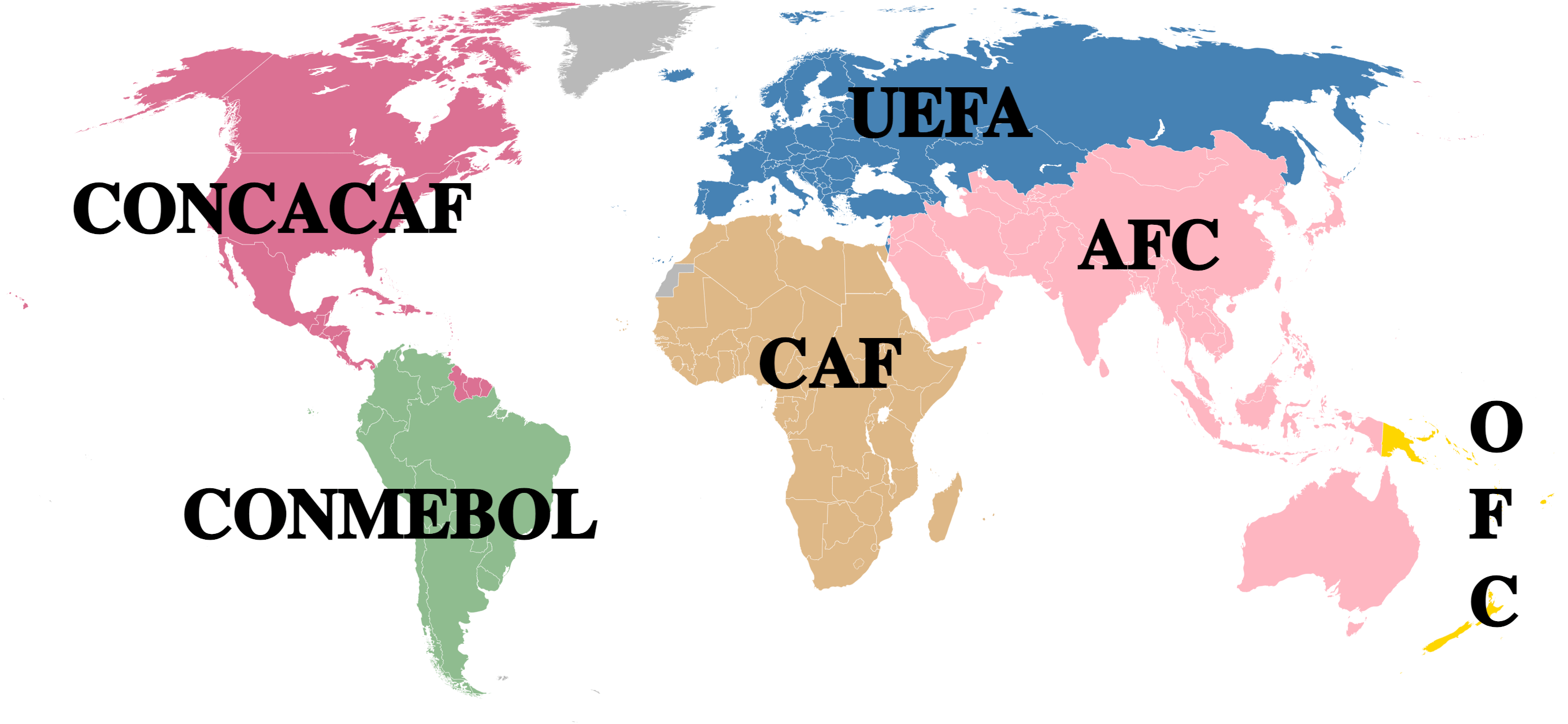
Somewhere between the local and the global sits the regional. FIFA is soccer’s global governing body, but one level below are six bodies representing entire continents: UEFA for Europe, CAF for Africa, AFC for Asia, CONCACAF for North and Central America plus the Caribbean, CONMEBOL for South America, and OFC for Oceania.
This map represents those bodies, and it is interesting precisely in those places where the soccer association divisions do not correspond to the traditional boundaries between continents.
- CAF covers all of Africa, and nothing but Africa, so no bones to pick there.
- UEFA, however, not only includes Turkey (a big “if” in geopolitical terms) but also Israel (which is also invited to Eurovision, a song contest). UEFA also includes the entire former Soviet Union, a “Greater Europe” not unlike some designs by Coudenhove-Kalergi (see Strange Maps #1002).
- AFC includes the rest of Asia, but also Australia, which in geographic terms is usually associated with Oceania.
- New Zealand has gone the other way. It and Papua New Guinea are the two most prominent members of OFC.
- CONMEBOL doesn’t include all of South America. The three Guyanas are part of CONCACAF. Yes, that includes French Guyana, which is mostly considered a part of France.
Pitch, please
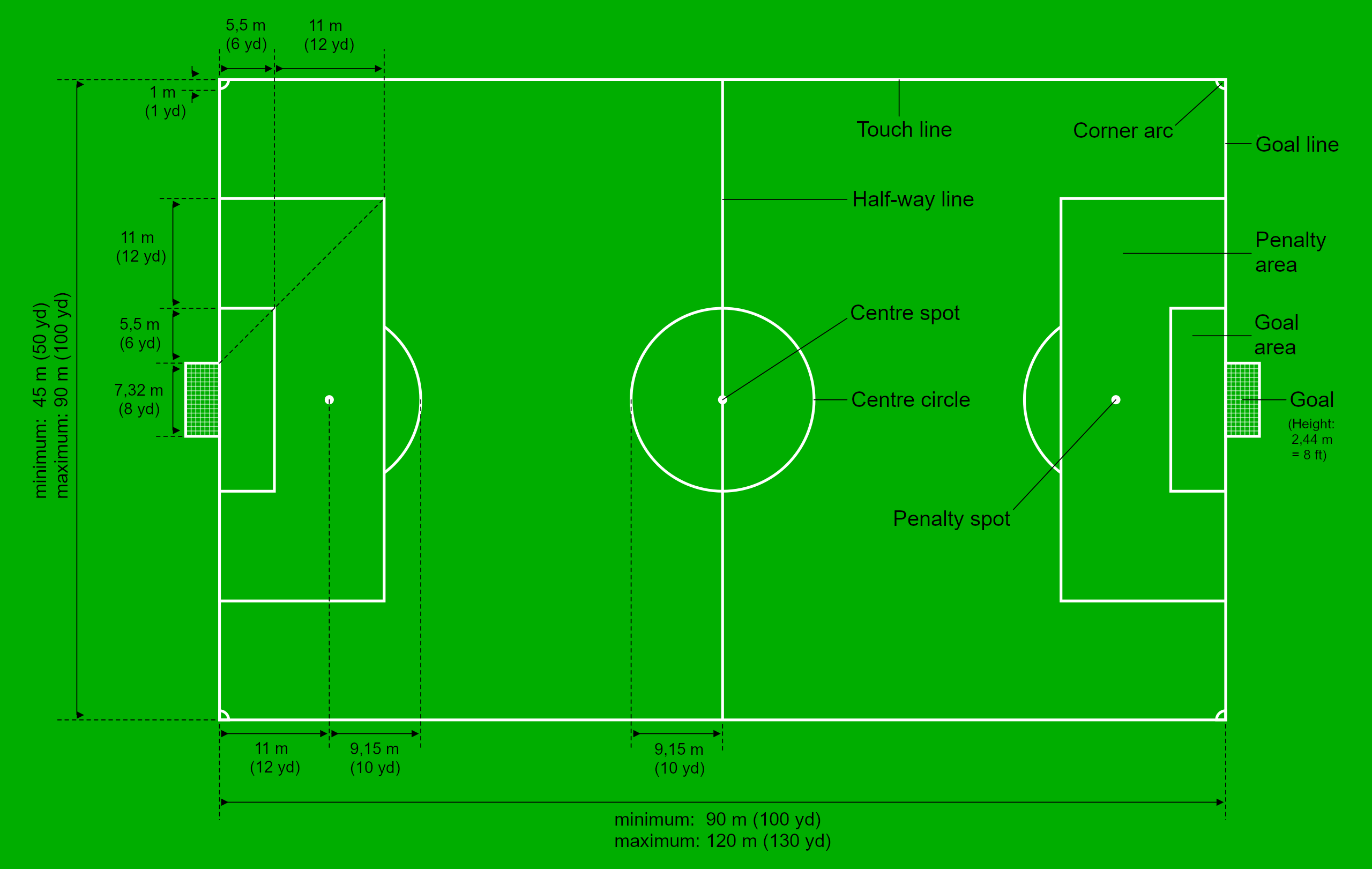
This map (and the next one) are about as close as this list gets to the actual physics of soccer. It is reminiscent of an old cartographic trope: the generic map that shows you what things are called (see also Strange Maps #637). There are no real surprises here, except that a few things remain unnamed — perhaps most intriguingly the arc attached to the outside of the penalty box.
Further reading suggests this is called the penalty arc (or colloquially, “the D”). Except for that last bit of soccer slang, it all sounds a bit stale. Let us know if you come up with better suggestions.
When soccer met Big Data
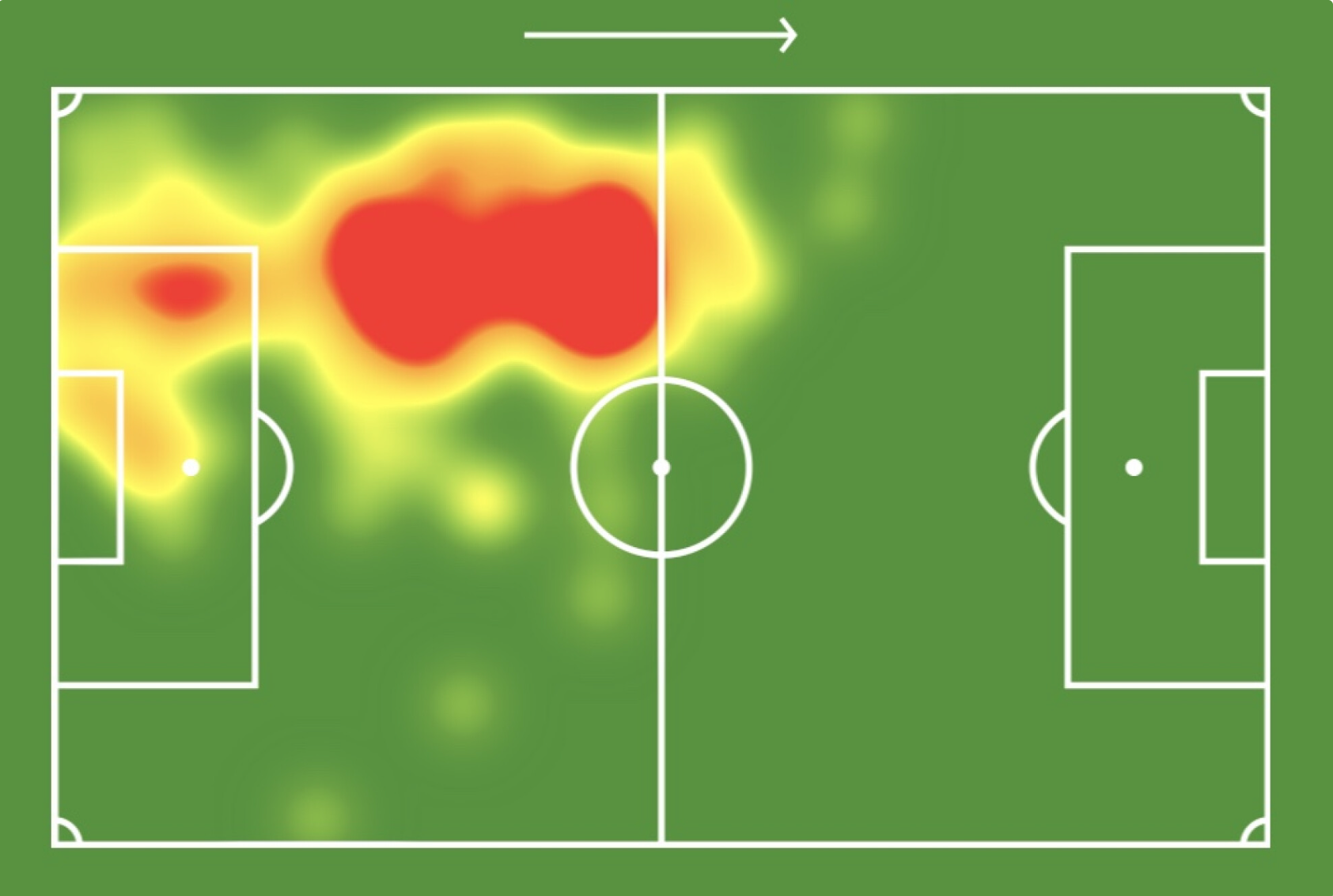
Soccer heat maps are where game day meets Big Data. Using the instinctive grading from cold (green) to hot (red) via the intermedium of lukewarm (yellow), this heat map represents the range and frequency of a player’s movements. Thus visualized, it becomes easy to analyze a player’s performance on the pitch — and if you’re the coach, to redirect their efforts or replace them with a player whose playing pattern has a more proficient heat signature.
New fans, old borders
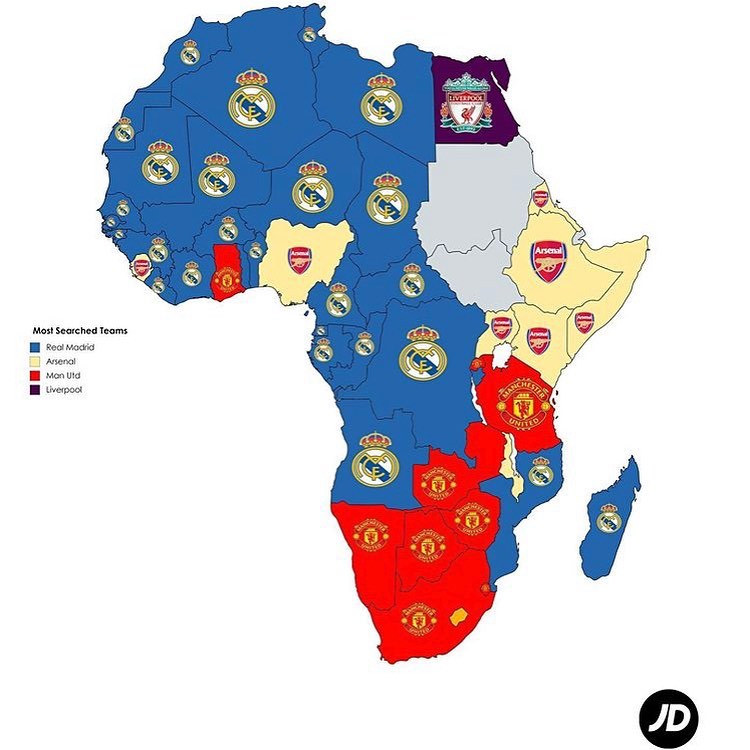
This map from 2020 may be a bit outdated by now, but it is striking nonetheless. It’s one of those “history isn’t really over” maps, like the one showing recent Polish election results aligning with the former borders of the German Empire, very much defunct (see Strange Maps #348).
This map shows the most searched soccer teams in each African country. Add up the three English teams — Arsenal (yellow), Manchester United (red) and Liverpool (purple), and ignoring for a moment the fact that both Sudans are data black holes — you get an unbroken Cairo-to-Cape stretch of land that would have delighted Cecil Rhodes. In West Africa, former British colonies Nigeria, Ghana, and Sierra Leone also follow English teams. The rest of Africa, mainly former French and Portuguese colonies, follow Real Madrid, a team from Latin Europe.
One small dribble for man
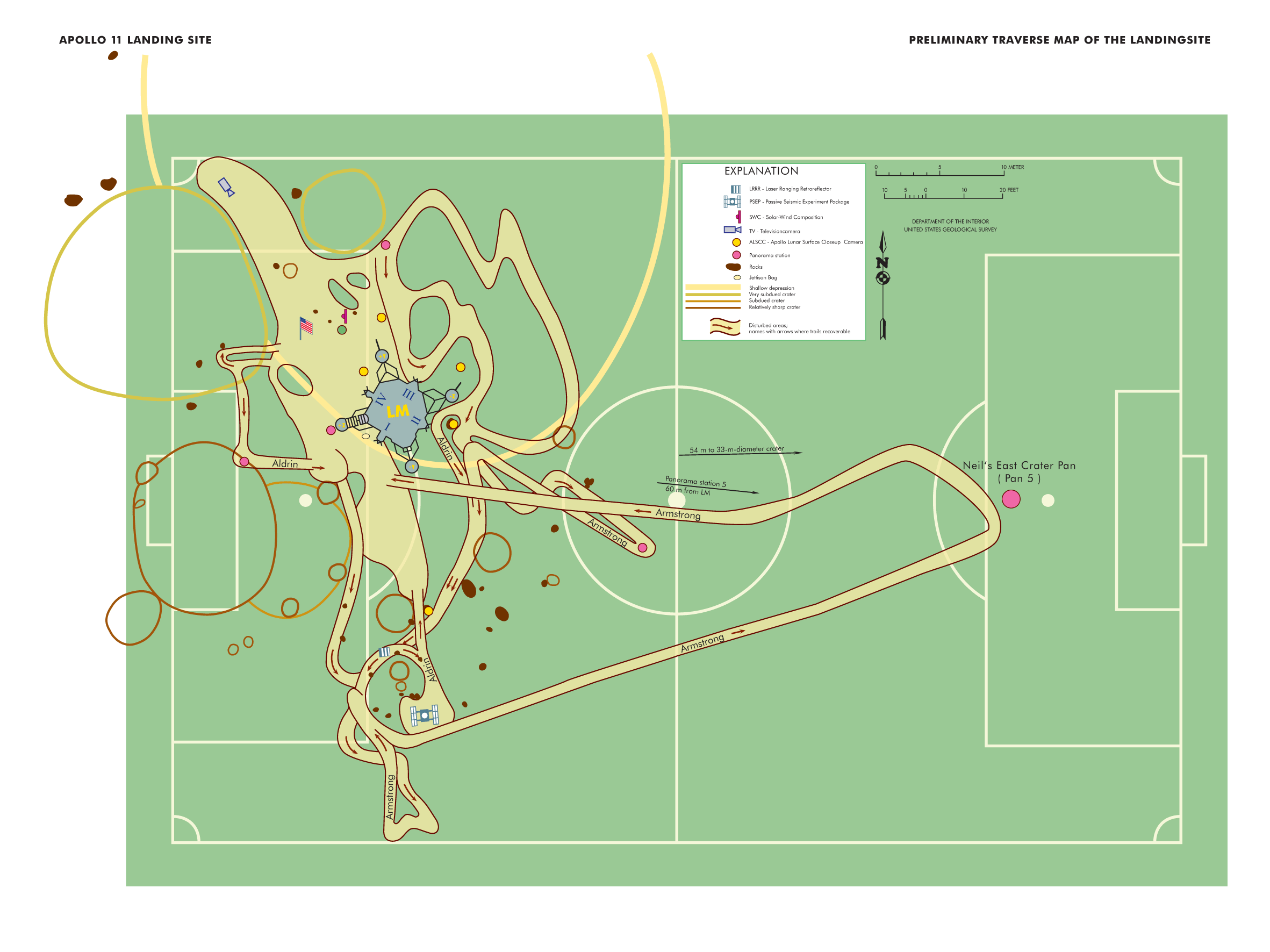
For safety reasons, humanity’s first visit to the Moon was limited to just a few paces beyond the lander craft. To put that in perspective, NASA placed a soccer pitch under Neil Armstrong’s Moon walk. It turns out he barely made it to the opposing team’s penalty arc.
Soccer pitches are a recurring unit of measurement in soccer-loving countries. For example: the deforestation of the Amazon in the first six months of 2022 was the equivalent of 600,000 soccer pitches. In case neither deforestation nor soccer is your thing, the Moon walk comparison map is also available using a baseball diamond as a measurement of reference (see Strange Maps #260).
Strange Maps #1180
Got a strange map? Let me know at strangemaps@gmail.com.
Follow Strange Maps on Twitter and Facebook.


